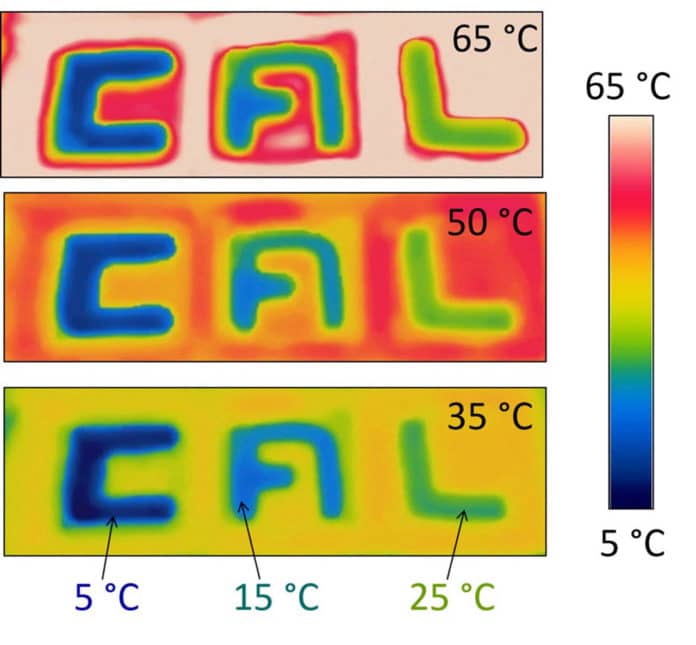Infrared light is invisible to the human eye, however, can be distinguished by a range of gadgets, for example, night-vision goggles and thermal-imaging cameras.
Scientists at UC Berkeley developed a new type of coating that can effectively tune target objects into emanating the same infrared radiation as the surrounding environment, making them invisible to infrared detection gadgets.
The coating is developed using a process in which scientists created special structures made from delicately engineered thin films of tungsten-doped vanadium dioxide.
The coatings can be manipulated in a way that a person trying to view the object with such a device would instead see a false image.
To create the structures, scientists focused on coating objects with tungsten-doped vanadium dioxide. With judicious engineering of the doping profile, the insulator-metal phase transition can even out, allowing the substance to emit a constant level of thermal radiation over a wide range of temperature variations (15-70 degrees Celsius). This state of equilibrium prevents a camera from detecting the true infrared signals that an object emits typically around room temperature.
The technology represents several advancements. Scientists were able to grow ultra-thin layers of vanadium dioxide (less than 100 nanometers thick) on structures made from borosilicate glass and sapphire. Using pulsed lasers, they doped the films with different amounts of tungsten and then transferred the material onto a special adhesive tape called polyethylene (PE) film tape.
According to scientists, this method offers better, increasingly reliable camouflage because the product is precisely adaptable, power-free, and characteristically self-versatile to fleeting change as well as the spatial variation of the target temperature.
Also, by manipulating the configuration and composition of tungsten-doped vanadium dioxide on coatings applied to the PE tape, it is possible to create an infrared decoy.
Junqiao Wu, UC Berkeley professor of materials science and engineering, said, “How we grow the material changes the image people ultimately think they see.”
In the paper, researchers described encoding the letters C-A-L onto samples that they later placed on the surface of an object. The color of the letters represents the temperature people see when viewing from an infrared camera. For example, the blue C shows it is at a constant 5 degrees Celsius, the lighter blue A at a constant 15 degrees Celsius, and the green L at a constant 25 degrees Celsius, regardless of the actual temperature of the samples.
Even though the object’s actual temperature varies widely from 35-65 degrees Celsius, a person who views the object through night-vision goggles will distinctly see a colder “CAL” that is independent of the actual temperature.
Wu said, “We can both erase real information and create false information. CAL stays cool when the environment is hot.”
Journal Reference:
- Kechao Tang et al. A Thermal Radiation Modulation Platform by Emissivity Engineering with Graded Metal-Insulator Transition. DOI: 10.1002/adma.201907071
